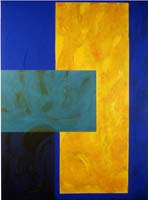Most books pertaining to the arts are located on the fourth and fifth floor. All reference books are to be found on the second floor. Note that all photography, fashion and craft books located at Carnegie Library.
Basic Call Numbers
N = Visual Arts
NA = Architecture
NB = Sculpture
NC = Drawing and Design
ND = Painting
NE = Print Media
NX = Arts in General
TR = Photography
TS = Manufactures and Design
TT = Handicrafts
What are primary, secondary and tertiary sources?
What they are and why it matters
Primary sources
Primary sources allow researchers to get as close as possible to original ideas, events and empirical studies as possible. Such sources may include expositions of creative ideas, first hand or contemporary accounts of events, publication of the results of empirical observations or studies, and other items that may form the basis of further research. Examples include:
- Novels, plays, poems, works of art, popular culture
- diaries, narratives, autobiographies, memoirs, speeches
- Government documents, patents
- Data sets, technical reports, experimental research results
Secondary sources
Secondary sources analyze, review or restate information in primary resources or other secondary resources. Even sources presenting facts or descriptions about events are secondary unless they are based on direct participation or observation. Moreover, secondary sources often rely on other secondary sources and standard disciplinary methods to reach results, and they provide the principle sources of analysis about primary sources. Examples include:
- Biographies
- Review articles and literature reviews
- Scholarly articles that don't present new experimental research results
- Historical studies
Tertiary sources
Tertiary resources provide overviews of topics by synthesizing information gathered from other resources. Tertiary resources often provide data in a convenient form or provide information with context by which to interpret it. Examples include:
- Encyclopedias
- Chronologies
- Almanacs
- Textbooks

